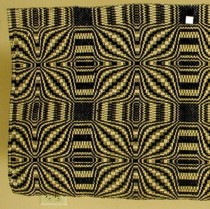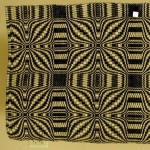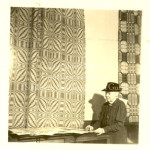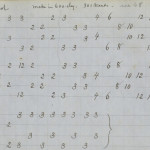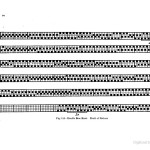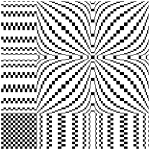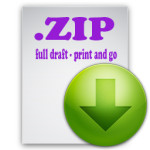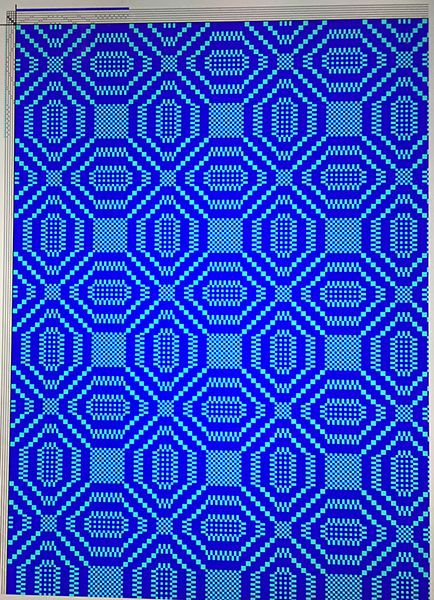
Jennifer wrote to me and asked me about this draft she had found in a file. She was not familiar with this particular draft and wanted to learn more about it. My first step was to look at the blocks – the areas separated by the long lines. Most of the sections have 4 lines in them in two rows. It appears that this draft is on four shafts. Likely it is an overshot draft.
I looked at the sequence of the blocks, reading from the right to the left, A block has lines on shaft 2 and shaft 4, B block has lines on shaft 2 and 3, C block has lines on shaft 1 and 3, D block has lines on shaft 1 and shaft 4. Looking through the rest of the draft the are no other combinations of lines. Our Draft has 4 blocks. I then could label the blocks on a piece of paper
I then wrote the draft out in my notebook, matching the lines and the threads by the block I identified.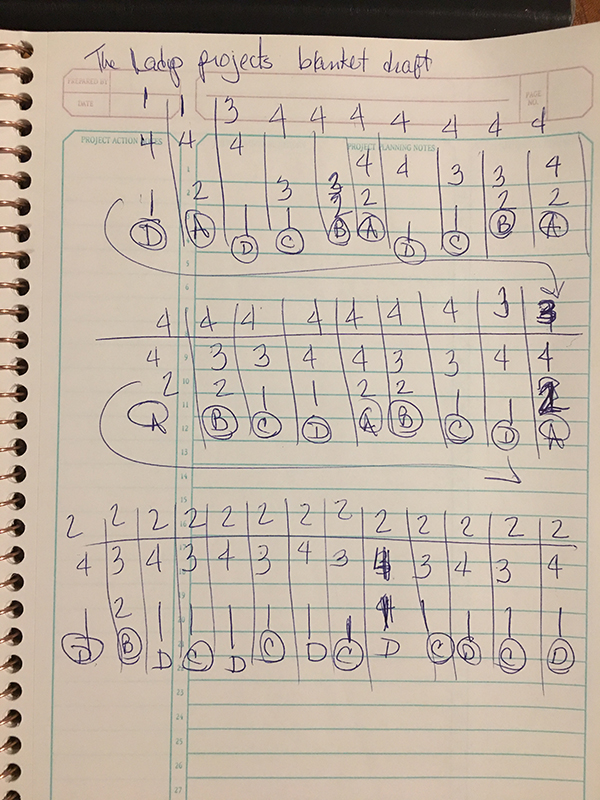
I then translated this into a profile draft by substituting the A Block for shaft 1, the B Block for shaft 2, the C Block for Shaft 3 and the D Block for shaft 4. Because some of the blocks had 4 threads and some only 2. I decided to use two threads to represent the four thread blocks, and one thread for the half block. I treated the 3 thread block as a two thread block for the profile.
I set the tie up to ABCD, to match the blocks.
I then selected tromp as writ, and colored the warp a contrasting color to make the design appear.
While I was entering the draft into the iWeaveit program, I noticed that some of the draft was not even (balanced) I adjusted the draft to make it even.
I had found one place where the draft did not move sequentially through the blocks. Usually overshot moves in a circular fashion through the blocks, jumping blocks can cause long floats to appear. You can see the area on the on the bottom line towards the left edge the block moved from D to B and back to D again. This is in one of the short blocks. This is not the way the other side of the block is, and so I adjusted it to match the beginning of the block sequence.
At this point you can not weave the pattern, but you have a fairly good idea of what the design will look like when woven.
The blocks in the threading move gracefully from left to right and the designed when woven will have that characteristic of a 45 degree diagonal line from bottom right to top left.
When this design is woven it will need to have a border and a number of repeats to match the size of the fabric desired. To repeat the design you would start from the top right of the threading and enter that sequence after the last thread on shaft 4 in the draft.
At this point, you are missing the threads for the ground cloth. The tabby weave.
To weave this pattern I will need to decide what structure it is, and then change the draft to have that threading arrangement. I will show you how I do this in the next blog update.
This is a quick look at the profile draft as it is repeated.
There are tables (the big blocks) and smaller blocks in the middle. The pattern will look like the checkerboard you see, to prevent long floats.
I am sure this pattern can have variations. This is a sample of what it would look like if it remained symmetrical.



